#paleopagan
Explore tagged Tumblr posts
Text
Fang and Fur, Blood and Bone Book Review

It's really hard to find good books that solely focus on animals within magical practice. I picked up this book way back when I was first starting my practice because I love animals, basically. I wanted to see how I could incorporate them into my practice or if it was something I should even do at all. I've come a long way since then so let's take a look at how it holds up now.
˚☽˚。⋆𓃦 ˚☽˚。⋆
Contents:
Synopsis
What I Liked
What I Didn't Like
Overall Thoughts
Conclusion
˚☽˚。⋆𓃦 ˚☽˚。⋆

Published 2006
"'Fang and Fur, Blood and Bone' is like no other book on animal magic. While covering the more common topics such as totemism and familiars, Lupa also delves into such controversial realms as shapeshifting, the magical and ritual use of animal parts, and includes pathworkings for matching totems with chakras.
Aimed at magical practitioners both new and advanced, 'Fang and Fur, Blood and Bone' is a must for anyone interested in this popular subject."
-from the back of the book
˚☽˚。⋆𓃦 ˚☽˚。⋆
What I Liked
The book starts off with a discussion of totemism (see below) explaining the origins of the word (the Ojibwe) and how it is used in anthropology. I mostly appreciated the discussion of the issues that came with the use of the word, that were then kind of ignored (again see below). It continues with a discussion of how to find an animal guide (Lupa calls this a totem) which is pretty decent even if the wrong word is used.
There's a whole chapter on creating a composite animal that is pretty interesting. This was basically the creation of a servitor or egregore (when a group creates it) that had different parts of different animals to create something that works in a specific way.
Another chapter covers basic shapeshifting as well as shapeshifting as a therian or otherkin. This was the first book I had read that talked about therianthropy or being otherkin in magic from the perspective of someone who is therian.
The chapter on working with animal parts is really good. Lupa talks about their experience finding animal parts ethically, putting the spirit to rest if it wishes, working with the spirit within the part if that is what it wants, and creating ritual tools with the part. I felt this was one of the best parts of the entire book.
The last chapter is not written by the author but is an important discussion when talking about working with animals within magic. The modern practice of animal sacrifice is deeply misunderstood. When I say modern I am also counting the traditional practices and religions that still continue the practice of sacrifice in the modern era. While you do not have to participate in animal sacrifice, you should learn more about it before denouncing those who do.
˚☽˚。⋆𓃦 ˚☽˚。⋆
What I Didn't Like
Unfortunately, there is cultural appropriation in this book. I don't think the author had any ill intent at all and considering the book was published in 2006, I'm willing to give Lupa the benefit of the doubt. However, the continued use of the word "totem" even with the very good explanation of it is, in my white ass opinion, inappropriate. There's also the use of a psychological model known as the "personal totem pole" which combines the idea of the totem pole and the bastardized version of chakras to assign animals to different "chakra" points and explore yourself my caring for those animals. It might just be me but it feels inappropriate. I also worry about the use of the term "paleopagan" as we don't actually know much about it outside of small figures that have been found at dig sites.
Lupa claims that all of our historical information on familiars comes from the Inquisition and the Salem Trials, which isn't true. We have plenty of folklore on the subject as well as trials outside of those two specific types. There were also two inquisitions, the Italian and the Spanish, which were also focused on different things specific to their political goals (which were different) and not so focused on familiars specifically.
The author also talks mostly about working with living animals as familiars specifically but actually seems to use them as ingredients rather than the tutelary function and partnership a familiar takes on in the folklore. For example, Lupa talks about tying spell pouches to a dog or cats collar as a way to charge them (Lupa actually says "mojo pouch" but that's a very specific form of hoodoo magic).
Lupa also discusses working with an animal spirit as a familiar, again reverting to the term totem after a while. The author mostly talks about how she has a spiritual ecosystem conducive to animal spirits hanging around her home and again talks about "becoming an animal." There are also no examples of working with a spiritual familiar (which she only discusses as animals) only saying that it's the same as the physical.
While I did enjoy the discussion on animal sacrifice (see above), the writer for that chapter conflated Kosher laws with animal sacrifice and they are not the same thing. Kosher has more to do with what can be eaten and how it can be prepared rather than ritual offering.
˚☽˚。⋆𓃦 ˚☽˚。⋆
Overall Thoughts
There are parts of this book that are very good however it is pretty dated. I have yet to find a book on working with physical animals and that entails that is better than this one unfortunately. Outside of bad terminology and lack of understanding certain topics (possibly simply due to the time period it was published in; I don't know I was 13 when it was published and more interested in anime than academic research and ethical quandaries of the time).
I can't necessarily recommend the book, despite aspects of it having had an effect on my own work. However, if you do read it I think you will pick up some good basic techniques if you can sift through the not so great aspects.
˚☽˚。⋆𓃦 ˚☽˚。⋆
Conclusion
If you wish to read the book it can be found on Amazon, the green wolf, Scribd, and with the publisher Immanion Press.
#witchblr#witchcraft#witchy book review#animal magic#fang and fur blood and bone review#witchcraft books
4 notes
·
View notes
Text
Maybe it���s just because like words, but there are a difference between those words. I am of the opinion that all words have history. Im not going to get angry if people use a different word, though.
Yes the paleopagans weren’t speaking English, but the words they used still have connotations and meanings.
I have to go now, but I can get examples if you want.
Can this religious community stop trying to define words for each other. Unless a word has a historical meaning, like miasma, or melam, or whatever. I mean like shrine vs altar, work with vs worship, devotee vs worshipper in relation to neo-paganism and recon/revive polytheism. Y'all realize none of them used English, the words being squabble over, right.
Like just....... can we not.
I'm seeing it everywhere and I hate it.
113 notes
·
View notes
Text
If you’re interested in “pagan survivals” - pre-Abrahamic religions, or scraps thereof, still being practiced today - I highly recommend Gerard Russell’s Heirs to Forgotten Kingdoms. It’d be a fascinating book on its own - there is more religious diversity in the Middle East than most of us probably realize - but of particular interest to Pagans are the ideas and practices that appear to have survived from the very ancient past. The Druze are modern-day Pythagoreans; the Mandaeans still use Babylonian astrology, still venerate the same planets, and some of their liturgy may date back to Babylon as well; the Kalasha of Pakistan are likely practicing a religion that shares ancestry with Hinduism and the Pagan religions of Europe; The Yazidis may have been religious cousins to the Mithraists (and if you’re familiar with the Feri tradition, you are probably already familiar with the Yazidis’ principal deity, the peacock angel Melek Taoos); the Zoroastrians, well, if you’re not already familiar with the ways Zoroastrianism influenced both Hellenic and Abrahamic theology (yes, including Judaism) and the ceremonial magick of medieval Europe, I highly recommend learning about them ASAP. The book is written as a travelogue; the author is not an academic, but a British diplomat who has spent his career in the Arabic-speaking world, and was lucky enough (and respectful enough) to be granted direct access to the communities he’s discussing - some of which have not been visited by European scholars for a couple hundred years. Definitely would recommend.
29 notes
·
View notes
Photo
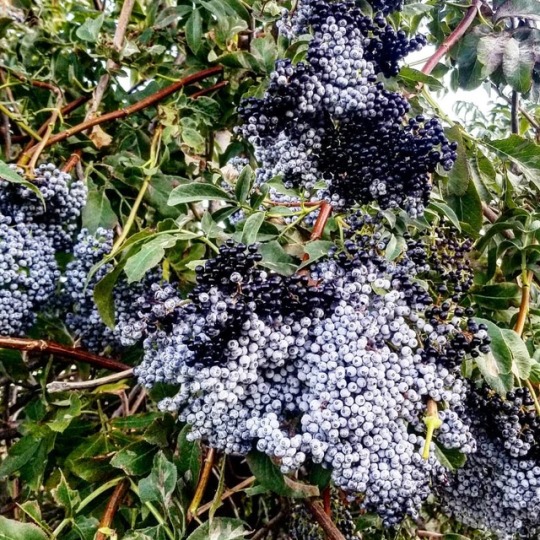
The beautiful bounty of Mother Elder. Thank you for your wonderful gifts. ❤❤❤ #pagan #heathen #asatru #vanatru #paganism #urglaawe #elderberry #wildcrafting #primalcraft #primalwitchcraft #paleopagan https://www.instagram.com/p/B0cddg-nsng/?igshid=1ssnw6avq36fy
#pagan#heathen#asatru#vanatru#paganism#urglaawe#elderberry#wildcrafting#primalcraft#primalwitchcraft#paleopagan
2 notes
·
View notes
Photo
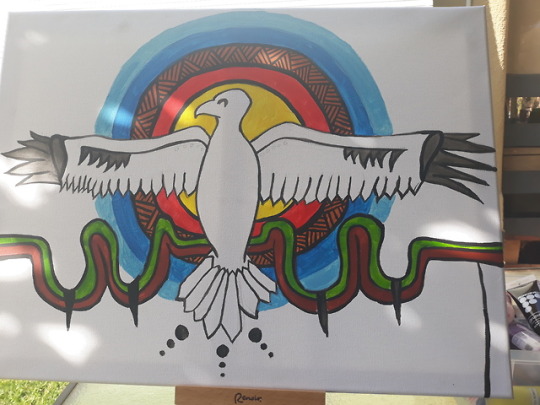
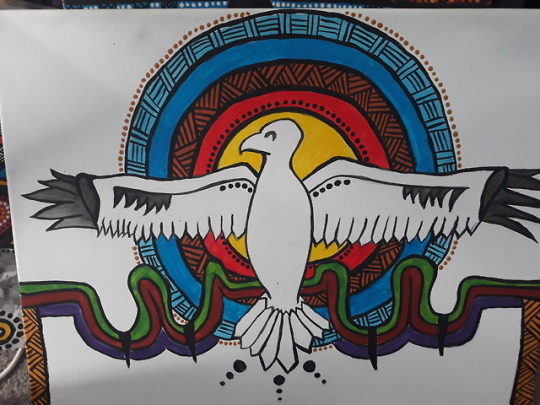
Painting I'm working on. Pilyara, my WaRnka (totem). Slowly getting there.
33 notes
·
View notes
Text
Legends indicate that on Samhain, all the hearth fires in Ireland were doused and then lit again from a central fire maintained by the Druids at Tlachtga, twelve miles from the royal hill of Tara. A central fire of this nature is called a need-fire. The Celts believed Samhain and Beltainne represented mystical fissures in time that allowed the living access to the land of the dead, called Tir na n’Og. To the Celtic peoples, there was death in life, and life in death—a concept no religion has shaken in the past 3,000 years. We must remember that the ancient view of time was cyclical, not linear, and in this framework New Year’s Eve as Samhain represents a point outside of time, when the natural order of the universe dissolves back into primordial chaos, preparatory to reestablishing itself in a new order. Thus, Samhain is a night that exists outside of time, and hence it may be used to view any other point in time. ~Silver RavenWolf
#Silver RavenWolf#Samhain#Halloween#Roots#origins#quote from her Halloween book#paleopagan#history of halloween
4 notes
·
View notes
Text
what being pagan means
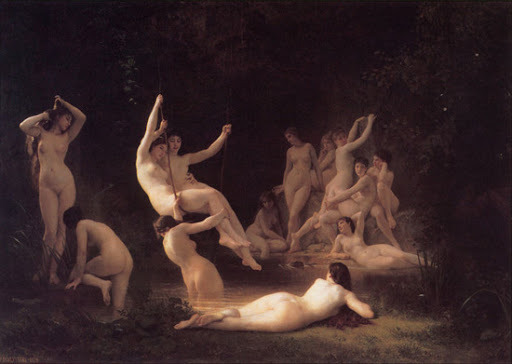
the term “pagan” comes from the latin word paganus, which refers to those who lived in the country.
this term was assigned to them because, when christianity started to grow in the roman empire, it was primarily in cities, so those who lived outside of the cities kept believing in “the old ways” and were known as people who believed in things outside “mainstream” religions, like christianity or judaism.
they are known, primarily, for not having any official doctrine and believing in a divine presence in nature, and they mostly live by the wheel of the year rather than the roman calendar of months.
different types of paganism
historical paganism
paleopaganism
civilopaganism
mesopaganism
syncretopaganism
neopaganism
secular paganism
modern paganism
naturalistic paganism
humanistic paganism
paleopaganism is the standard of paganism. it’s a pagan culture that hasn’t been disrupted by “civilization” by another culture. for example: druidism (ancient celtic religion), the religions of the pre-patriarchal cultures of old europe, norse religion, pre-columbian native u.s. religions, etc.
civilopaganism is the beliefs of “civilized” communities which evolved in paleopagan cultures, such as: classical greco-roman religion, egyptian religion, middle-eastern paganism, aztec religion, etc.
mesopaganism consists of a group, which may or may not still constitute a separate culture, that has been influenced by a conquering culture, but has been able to maintain an independence of religious practice.
syncretopaganism, while similar to mesopaganism, had to tosubmerge itself into the dominant culture, and adopt the external practices and symbols of the other religion. for example, the various afro-diasporic traditions (voodoo, santeria, etc.), culdee christianity, etc.
the term neopaganism, a.k.a. contemporary paganism or modern paganism, was coined in the 19th century, when paganism resurfaces as a topic of fascination in romanticism. particularly in the context of the literary celtic and viking revivalism that portrayed historical celtic and germanic polytheists as noble savages.
revivalism, in architecture, is the use of visual styles that consciously echo the style of a previous architectural era.
by the mid-1930s it was used to refer to new religious movements, and by 1964 and 1965, it was used as self-designation in publications related to witchcraft. at the time it was used by revivalist witches in the u.s. and the u.k.
contemporary paganism attempts to reconnect with nature, using imagery and forms from other types of pagans but adjusting them to the needs of modern people. their practices and beliefs are said to be a collection of modern, religious, spiritual and magical traditions that are self-consciously inspired by the pre-judaic, pre-christian, and pre-islamic belief systems of europe, north africa, and the near east. some examples are:
wicca, in its many forms
neoshamanism
neodruidism
asatru and other forms of norse neopaganism
neonative u.s. practices
the range of practices labeled “women’s spirituality”
secular paganism is a form of neopaganism in which pagan deities are viewed as archetypes instead of real beings, but pagan virtues and principles are upheld. this means that secular pagans do not have a formal religion — they do not believe in any form of goddess or god. however, they remain pagan to its truest form.
notes:
historical paganism is passed down generation to generation, while neopaganism is self taught and closely related to historical paganism beliefs.
secular paganism is not atheist paganism, as secular pagans believe in energy —or chi— while atheists simply do not believe in anything. although secular means non-religious by definition, secular witches still believe in energy. religion is not the same as the belief in the supernatural. religion is also not synonymous with theism because there are non-theistic forms of religion, like buddhism and taoism.
the fifteen guiding principles of secular paganism, according to abby willoroot:
ethical behaviour does not require a religion
all living things have a unique spirit or soul
the equality of genders, races, and all humans
care must be taken in using nature’s resources
all Earth’s life is connected and inter-dependant
the Gaia Principle is an important, basic, truth
the cycles of Nature teach us what is important
balance must be maintained for all life to flourish
our health depends on the the environment’s health
our individual actions can and do have consequences
evolution is an ongoing process that occurs in all species
birth, living and death are natural cycles shared by all life
respect for ourselves requires respect for the Earth
all human cultures have value and can teach us
goddesses and gods can be seen as metaphors
“secular paganism is not a religion — it is an ethical view of the world, based on the belief that nature is sacred and must be respected and treasured. secular pagans hold many of the same views about nature that religious pagans and many people of other religions do. secular pagans believe that we are a part of nature, not her master. there are no particular religious views connected with secular paganism.”
—Abby Willowroot
naturalistic paganism is a form of philosophical naturalism, which seeks to explain the universe without resort to supernatural causes. for naturalistic pagans, “naturalistic” is synonymous with “scientific.” in general, they adopt the most current explanations of science and are skeptical of claims not supported by science.
naturalistic pagans are also skeptical about things like magic(k), psychic abilities or communication with spirit entities, attributing intention to inanimate nature to the extent that, when they speak about “magic(k)” or “gods,” they tend to use these words differently than their common usage. naturalistic pagans may understand “gods” as metaphors for natural phenomena.
in short, naturalistic paganism integrates mythic, editative, and ritual practices with a worldview based on the most compelling scientific evidence.
as well as naturalistic paganism, humanistic paganism describes the pagan path for those who are uncomfortable with or skeptical of the supernatural or metaphysical elements of contemporary paganism. they are pagans who are firmly rooted in the physical world. humanistic paganism “is a naturalistic path rooted in ancient paganism and contemporary science.” it is a form of religious or spiritual humanism.
religious humanism can describe any religion that takes a human-centered ethical perspective as contrasted with a deity-centered ethical perspective. what is good is defined in terms of human experience rather than the will of any goddess or god. religious humanists tend to be atheistic or non-theistic. for religious humanists, human experience and reason provide a more than sufficient basis for ethical action without supernatural revelation. humanistic paganism can embrace the notion that we humans are part of a much larger community of beings to whom we have ethical obligations. the adjective “humanistic” is intended to contrast with “theistic;” it excludes goddesses and gods, but not other living beings.
41 notes
·
View notes
Text
British Druid Order (BDO) Analysis
Year founded: 1979
Location Founded: Hastings, Sussex, UK
Origins, inspirations, or parent org: Inspirations - various metaphysical resources, occultism, paleopagan ‘European shamanism.’
Founders: Philip Shallcrass
Official Symbols: Three rays of Awen with three drops of knowledge above and overlapping a slightly smaller blue circular background.
Theological compatibility: Polytheism (hard and soft), eclectic neopaganism, animism, European shamanism, ancestor veneration, pantheism/panentheism.
Founder prior involvements: Alexandrian Wicca, other metaphysical endeavors.
Active, Hiatus, or Defunct, & Rebootability: Currently active.
Centrally organized: Yes
Governing body: Grove of Elders
Study Program or Mentorship: Study Program
Member degrees, ranks, or levels of achievement: Bard, Ovate, and Druid.
Membership fees and recurrence: Free basic membership, but courses are £150 each, or 12 monthly installments of £25 per course, meaning you’ll end up paying £300 over the year if you don’t pay in a lump-sum. Membership is for life.
Estimated membership: Unknown. Philip Shallcrass declined to answer this question in an interview but offered the statement “lies, damn lies and statistics.”
Estimated number of Groves or study groups: 4 have opted-in to being listed publicly. All Groves are autonomous.
Current grand poobah & title: Philip Shallcrass AKA “Greywolf,” Chief of BDO.
Cult danger (A. B. C. D. E. F. version 2.7) estimated rating: NULL
Alleged cult criteria: NULL
If anything needs to be rectified, please contact me with proof for correction.
Return to Druid Order List
1 note
·
View note
Text
The Original People

We are the Pagans.
We are the Firstborn.
Read more...
#people#pagans#paganism#history#paleopagans#old pagans#neopagans#new pagans#pagans and the land#twin cities pagan pride#pagan pride#twin cities#american midwest#united states#us#america#usa#north america#pagansquare#pagan culture#paganistan#steven posch
0 notes
Note
As an Australian Aboriginal, I might be able to offer some advice here since we've had similar experiences with colonisation and religion. A lot of our peoples were forced to convert to Christianity, namely Catholicism. My parents had experience with a Catholic upbringing (because of missionaries), however, there was still a lot Indigenous spirituality they practiced in spite of having Christianity forced onto them. This is true for a lot of Indigenous peoples, regardless of if they have converted either forcibly or by choice. For example, even though there was always Catholic iconography in my house growing up, my parents still used smoke cleansing to ward off bad spirits; my mother had a connection to the spirit world; they still followed our kinship systems (i.e. waRnka and moiety); they used natural medicines for healing; they observed native ritual such as song and dance; and still maintained a spiritual connection to the land through being On Country and through Dreaming stories.
Look to the practices your family still maintains. It may not be obvious right away, but there will be things they still do. Songs and prayers they still know; stories that have been passed down. Medicines and ritual that are so ingrained in their day-to-day practice that they don't give it any thought, or view it as paleopagan. Think about some of the spiritual things that have always occurred. The clothing and adornments they have always worn. Maybe something your grandparents carried with them that could be explained away as superstition, but is really a connection to a belief system you thought was gone. Find the things that have survived and endured, and embrace them. That's how you begin to rekindle that connection.
Just while I am thinking of it, my cousin wanted to learn about witchcraft a few years ago, and went to the library to get some books. That's a good place to start - research. Her stepfather (non-Indigenous) was a devout Christian who found her books and had a complete meltdown. That's something that might happen, so please be prepared. She had to hide her research later to keep the peace, but she found her way. Feed your curiosity, but be careful with where it may lead (especially when you're still a minor and living with your family). Hopefully, they will respect your choices in the long run.
Drawing comparisons to your own old belief systems and their new ones can help. Knowledge is the key to it all, so take time to study. Learn about the history of Christianity and the role it played in colonisation - it can absolutely help you to resist and reject it (or embrace aspects that speak to your spirit as everyone is individual and religion can be very personal). Knowledge is power; knowledge informs your personal power. Go into everything prepared and you will be okay.
Lastly, speak to your Ancestors; they walk with you, always. Let their voices guide you. Send out prayers to them.
Good luck with it all! May your Ancestors bless you on your journey.
@nativewitches if this is inappropriate or out-of-line, please let me know. Keep up the great work!
my family was converted to christianity through residential schools and I want to reconnect with native spirituality as well as learn about witchcraft but I do not know how to do so when they don’t approve, do you have any advice? I’m a minor & currently live in a city without many people from my tribe so I don’t know where to turn.
I can’t give a lot of advice, because I just…have no idea, but I would suggest just starting to read what you can. Online is better, as long as they don’t monitor it.
I’m sorry for the lack of a better answer— my family had a firm “whatever, do what you want” attitude with me, particularly as a teenager. So I just kind of did whatever.
But the best thing you can do is to study. Knowledge is something you’ll be able to carry with you into your adult years.
20 notes
·
View notes
Photo
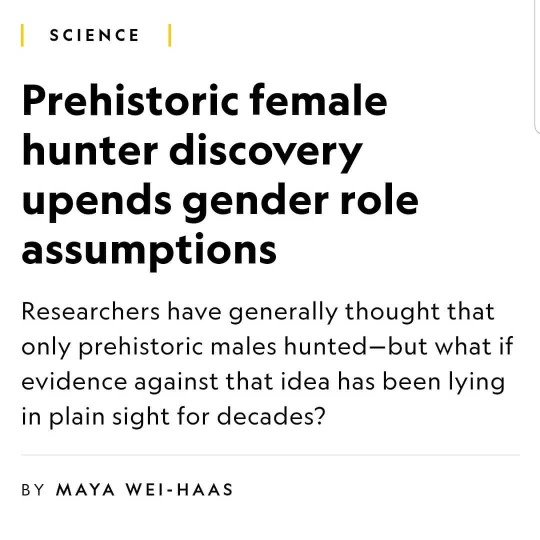
This is amazing! Thank you, @natgeo ! National Geographic: Prehistoric female hunter discovery upends gender role assumptions. https://www.nationalgeographic.com/science/2020/11/prehistoric-female-hunter-discovery-upends-gender-role-assumptions/ #paleolithic #iceage #ancestorwork #oldeurope #pagansofinstagram #heathenry #pagan #paganism #paleopagan #stoneage https://www.instagram.com/p/CHNyVQhnHoQ/?igshid=1usfan9jf47fj
#paleolithic#iceage#ancestorwork#oldeurope#pagansofinstagram#heathenry#pagan#paganism#paleopagan#stoneage
0 notes
Text
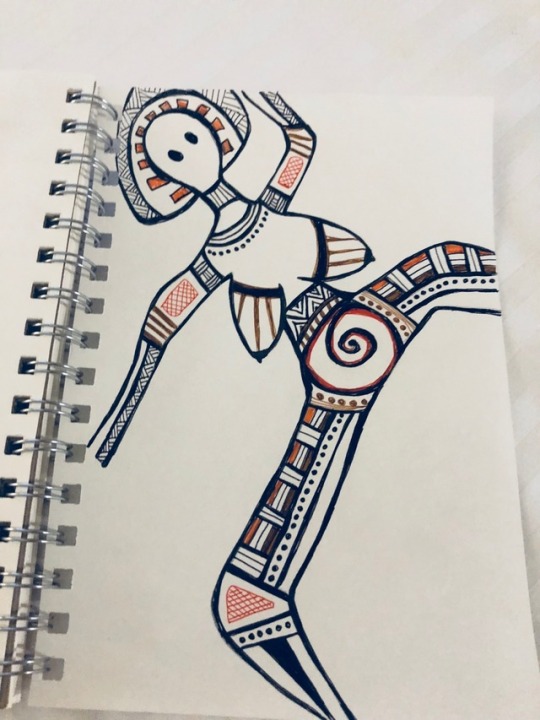
Study for a piece in a series I’m going to begin. Interested in ‘objects of ethnography’ depicting women, especially Indigenous women. I want to explore how depictions, and actual parts of our bodies are studied and collected, but our voices are rarely heard.
7 notes
·
View notes
Text
One Branch, Many Blossoms
One Branch, Many Blossoms #onceandfuturefaith
Reform Pagans often illustrate our place within Paganism through the metaphor of the “Great Tree of Paganism”: We speak of the Paleopagan roots, Mesopagan trunk, and Neopagan branches, and we distinguish our Neopagan branch of Reformism from the coequal branches of Traditionalism (generally including all forms of Pagan Reconstructionism, together with many varieties of Pagan Eclecticism) and…
View On WordPress
#agnosticism#atheism#duotheism#eclecticism#neopagan#neopaganism#nontheism#once and future faith#pagan#paganism#polytheism#reconstructionism#reform paganism#spirituality#theism
0 notes
Text
Pagan Religions and Their Categories
Pagan Religions and Their Categories
Pagan Religion and Their Categories ~
The Pagan Religions have been divided into three categories by modern pagan researchers to make things a little bit easier to discern when trying to figure out what time period a pagan religion is based on. Not all pagan religions are based on the same time frame of pagan beliefs and in history. Some pagan religions are actually completely modern, but…
View On WordPress
0 notes
Photo
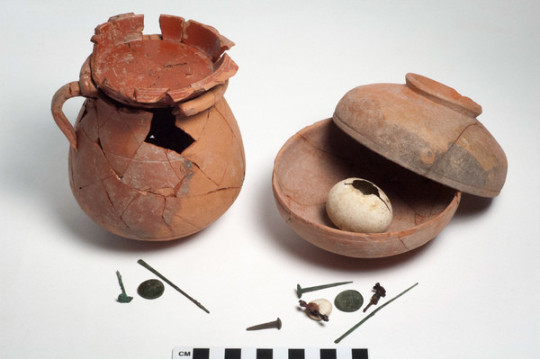
Sardis dig yields enigmatic trove: Ritual egg in a pot
The ruins of Sardis, in what is now Turkey, have been a rich source of knowledge about classical antiquity from the 7th century B.C., when the city was the capital of Lydia, through later Greek and Roman occupations.
Now, however, Sardis has given up another treasure in the form of two enigmatic ritual deposits, which are proving more difficult to fathom than the coins for which the city was famous.
"The two deposits each consist of a small pot with a lid, a coin, a group of sharp metal implements and an egg, one of which is intact except for a hole carefully punched in it in antiquity," explains Will Bruce, a classics graduate student a the University of Wisconsin-Madison who has been digging at Sardis for the past six years. Bruce made the finds last summer.
Read the rest here.
49 notes
·
View notes
Text
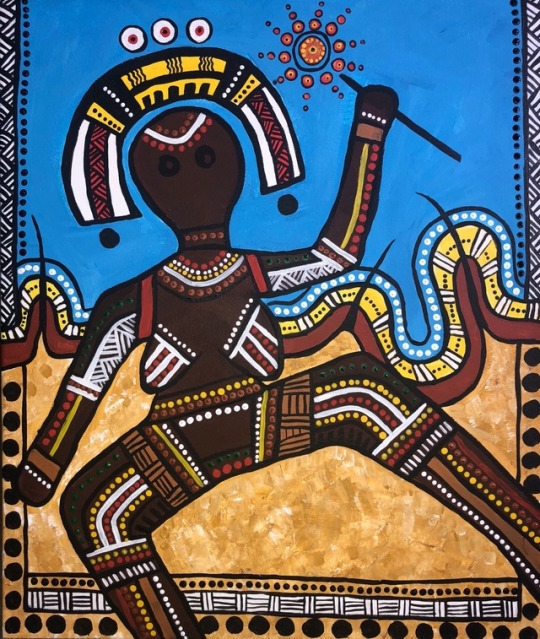
This painting is my representation of Paakantyi Ancestor Being, Yuku. At the dawn of time, when Mother Earth was shrouded in darkness, a woman named Yuku shared life-sustaining light and heat with the world. It is said that Yuku would wake up, adorn herself in ceremonial paint, light her fire stick, and then dance across the sky. She would provide light and warmth as she danced. Plants thrived in her wake, and other Ancestors were brought out of their perpetual slumber. Yuku danced and gifted the world with light each day. When her ceremony ended, she remained in the sky as the Sun Goddess. The Paakantyi word for sun is Yuku. When we think of her, we are reminded of the sharing nature of the feminine aspect; life-giving, caring, and powerful beyond measure.
@bcuz-y 😊
72 notes
·
View notes